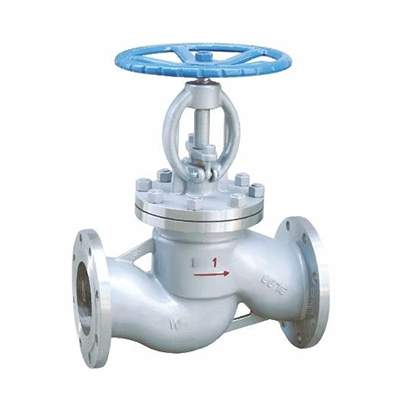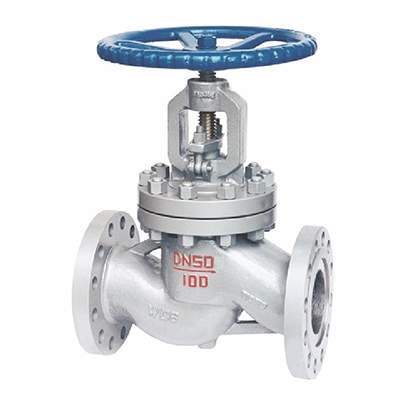Welcome to My Blog!
Before we dive into the content, if you’re interested in our products or have any questions, please feel free to visit our Contact Us page on the website. Our team is ready to assist you with inquiries, orders, or any support you may need.
Now, let’s get started on our journey together. I hope you find the content here insightful, engaging, and valuable.
In industrial operations where high temperatures, flammable media, and extreme pressures are part of daily processes, fire safety is a top priority. Among the many critical safety devices, the fire safe globe valve stands out for its reliability in preventing leakage and ensuring operational continuity even in fire conditions.
This article explores how fire safe globe valves work, what makes them unique, and how they are applied across various industries such as oil & gas, chemical, power generation, and marine systems.
Understanding the Fire Safe Globe Valve Design

A fire safe globe valve is designed to maintain a tight seal and prevent fluid leakage when exposed to fire or high heat. Unlike standard valves, these are built to endure extreme conditions without losing functionality.
What Makes a Globe Valve Fire Safe?
A fire safe globe valve uses fire-tested sealing systems to maintain internal pressure containment even if soft sealing materials like PTFE are destroyed during a fire. It relies on metal-to-metal contact between the valve seat and disc, preventing leakage once non-metal components fail.
Common Materials and Sealing Mechanisms
High-performance fire safe valves are made from carbon steel, stainless steel, or alloy steel. For sealing, graphite packing is commonly used because it can resist temperatures above 650°C. The body-bonnet joint and stem sealing are reinforced to maintain tightness during high heat exposure.
Fire Testing Standards — API 6FA, API 607, ISO 10497
Certified fire safe globe valves must pass international fire tests like API 6FA, API 607, or ISO 10497. These standards ensure that after a valve is exposed to direct flame, it can still operate and prevent external leakage.
Fire Safe Globe Valves in the Oil and Gas Industry
The oil and gas sector demands the highest level of fire safety due to its exposure to flammable hydrocarbons. Fire safe globe valves are crucial in pipeline isolation, refinery control, and offshore safety systems.
On offshore platforms, these valves ensure containment during blowouts or accidental fires. Refineries rely on API 607 certified valves to comply with stringent safety codes and prevent catastrophic product loss.
Use of Fire Safe Globe Valves in the Chemical and Petrochemical Sector
In chemical and petrochemical plants, where operators handle volatile and corrosive fluids, fire safe valves serve as a safeguard against fire-induced leaks.
The corrosion-resistant stainless steel body ensures durability in harsh chemical environments. Graphite-sealed valves minimize vapor emissions and maintain containment, even if a fire damages soft sealing components. These valves also help facilities meet EPA and OSHA safety requirements.
Fire Safe Globe Valves for Power Generation Plants
Power generation facilities—especially those using steam systems—operate under high temperatures and pressures. Fire safe globe valves play a vital role in boiler feed lines, steam isolation systems, and turbine control circuits.
They are engineered to resist thermal shock and fire exposure, ensuring that no combustible media escape during emergencies. In nuclear power stations, these valves are used in containment and cooling systems where absolute reliability is non-negotiable.
Application in Marine and Offshore Systems
Marine environments pose unique challenges such as saltwater corrosion, vibration, and fire hazards. Fire safe globe valves are installed in ship engine rooms, fuel transfer lines, and ballast systems to ensure safety in confined spaces.
Marine-grade materials like duplex stainless steel or bronze provide both corrosion and fire resistance, meeting standards required by offshore safety agencies and ship classification societies.
Fire Safe Globe Valves in Refinery and LNG Applications
Refineries and LNG (Liquefied Natural Gas) facilities handle large volumes of flammable fluids. Fire safe globe valves are critical in fuel storage, transfer systems, and emergency shutdown (ESD) circuits.
These valves are designed to function under cryogenic and high-temperature conditions alike. During a fire, the secondary metal seal activates to maintain isolation, protecting both personnel and equipment.
Fire Safe Globe Valves in Water Treatment and Industrial Utilities
Even in non-flammable industries like water treatment, heating, and industrial utility systems, fire safe valves add an extra layer of safety. They prevent the spread of fires caused by thermal oil leaks or combustible fluids.
Routine inspection and proper installation are essential to ensure long-term valve reliability. Many industrial utility systems now adopt fire-rated valves as part of their risk management strategy.
Choosing the Right Fire Safe Globe Valve for Your Application
When selecting a fire safe globe valve, engineers should consider:
- Material compatibility (carbon steel, stainless steel, or exotic alloys)
- Pressure and temperature rating (e.g., Class 150–1500)
- End connection type (flanged, threaded, welded)
- Fire safety certifications (API 6FA, API 607, ISO 10497)
Compared to a fire safe ball valve, a globe valve provides better throttling control and precise flow regulation, making it ideal for process lines that require both control and safety.
Selecting a reputable manufacturer that offers certified products and testing documentation ensures compliance with both local and international safety regulations.
Future Trends in Fire Safe Valve Technology

As industries move toward digitalization and sustainability, the next generation of fire safe valves is evolving fast.
- Smart monitoring systems are being integrated to detect leaks or seal degradation early.
- Manufacturers are investing in eco-friendly materials and energy-efficient production methods.
- Fire safety standards such as API 6FA and ISO 10497 are continuously being updated to address new industrial challenges.
These advancements not only improve safety but also reduce downtime and maintenance costs.
Conclusion
The fire safe globe valve is an essential component across industries where safety and reliability are critical. From oil refineries and chemical plants to marine vessels and power stations, these valves protect lives, assets, and the environment.
By understanding their applications, design standards, and material selection, engineers and plant managers can choose the right valve to meet modern safety requirements.
FAQ
What is a fire safe globe valve?
A fire safe globe valve is a type of control valve designed to maintain a tight seal and prevent leakage even when exposed to fire or extreme heat.
How does a fire safe globe valve work?
It uses metal-to-metal sealing and fire-resistant materials like graphite packing to ensure internal containment when soft seals fail during a fire.
What standards apply to fire safe globe valves?
Common standards include API 6FA, API 607, and ISO 10497, which test valve performance under fire conditions.
Where are fire safe globe valves used?
They are widely used in oil & gas, chemical, power generation, marine, and LNG industries for fire protection and fluid control.
What materials are used in fire safe globe valves?
Typical materials include carbon steel, stainless steel, and alloy steel, chosen for their high-temperature and corrosion resistance.
Need Help Selecting the Right Fire Safe Globe Valve?
If you’re not sure which fire safe globe valve fits your specific industrial application, our engineering team is ready to assist. Contact us today for a professional consultation and get expert advice on selecting the most reliable, certified, and cost-effective solution.
Don’t leave your safety to chance—reach out now to ensure your system is fully protected and compliant with international fire safety standards!
